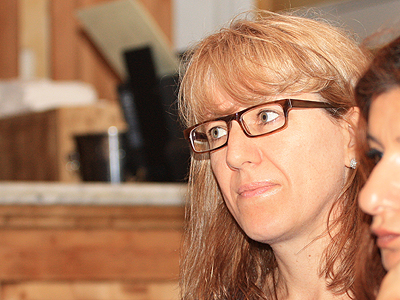
From next April, local authorities will be under a duty to commission or provide services in their area that prevent, reduce or delay needs for care and support among adults in their area, under section 2 of the Care Act 2014.
While traditionally, councils have deployed social workers in gakekeeping eligibility for care and working with those who meet criteria, arguments are being made for deploying practitioners, and fellow professionals such as occupational therapists, in preventive roles.
One example of this in action is the Topaz (Team Offering People Advice and Zest) team in Lambeth, a social enterprise spun out of the London council in 2012 and one of the government’s social work practice pilots.
The team – consisting of director Dee Kemp, a social worker, 2.5 other social workers, a community worker and an OT – works with people found ineligible for services by the council and self-funding care home residents, groups traditionally denied professional support.
Working under contract from Lambeth Council, it is tasked with providing preventive support that maximises independence and promotes well-being, a task in which it appears to be succeeding. Set a target for ensuring that no more than 15% of its clients are referred back to the council for formal adult care support, it limited this figure to 8% in 2013-14.
At this week’s Community Care Live, Kemp and team OT Esther Linton discussed its approach through a series of case studies.
Case study 1: a telephone review
A single mother of two, who also cared for her mother, was becoming increasingly stressed about her caring role and the fact that her 14-year-old daughter was self-harming. She was also having trouble sleeping.
She received a telephone review from Linton, who talked to her about various sources of support she could access, including charities the Samaritans and Mind, and then sent her some information on stress management techniques.
Linton called back a few weeks later to find the woman feeling much better, having accessed support from the Samaritans and employed some of the suggested stress management techniques.
Case study 2: a community surgery
Linton also discussed a community surgery she held one afternoon in a pharmacy, providing a forum for people to speak to her about any problems they were going through.
Among the people, aged 21-88, she encountered was a person being subject to homophobic hate crime, whom she put in touch with the local hate crime co-ordinator; and someone who suffered a panic attack in the pharmacy during the surgery itself. Linton spoke to this person in a private room, enabling her to provide some information and advice on how they could better manage her panic attacks.
Case study 3: visiting a self-funder in a care home
Linton discussed a visit to a self-funding care home resident in her 90s, who had dementia and osteoporosis. She found that the walking stick the person was using was not suitable and put pressure on her shoulders. She also had a call bell that did not work and one of her bathroom taps was not working.
By identifying these issues, Linton was able to take these up with the home’s deputy manager. Returning a few weeks later, Linton found all the issues had been resolved.
Case study 4: a home visit
Linton visited a woman in her 40s who did not meet eligibility thresholds but who had arthritis throughout her body and who had suffered a bad fall that had severely injured her.
Having recently suffered some falls on the stairs, Linton checked with the council’s OT manager whether she met criteria to have grab rails fitted, which she now did.
But the visit also revealed that the person had significant social needs. A former teacher, her reduced mobility had left her feeling unable to participate in the community and feeling depressed as a result.
Linton provided her with some information on joining a gym that catered for disabled people and on a scheme that helped people having mental health issues make new friends and link up with people with similar lived experience.


 Bournemouth, Christchurch and Poole
Bournemouth, Christchurch and Poole  Hampshire County Council
Hampshire County Council  Lincolnshire County Council
Lincolnshire County Council  Norfolk County Council
Norfolk County Council  Northamptonshire Children’s Trust
Northamptonshire Children’s Trust  South Gloucestershire Council
South Gloucestershire Council  Wiltshire Council
Wiltshire Council  Wokingham Borough Council
Wokingham Borough Council  Children and young people with SEND are ‘valued and prioritised’ in Wiltshire, find inspectors
Children and young people with SEND are ‘valued and prioritised’ in Wiltshire, find inspectors  How specialist refugee teams benefit young people and social workers
How specialist refugee teams benefit young people and social workers  Podcast: returning to social work after becoming a first-time parent
Podcast: returning to social work after becoming a first-time parent  Podcast: would you work for an inadequate-rated service?
Podcast: would you work for an inadequate-rated service?  Family help: one local authority’s experience of the model
Family help: one local authority’s experience of the model  Workforce Insights – showcasing a selection of the sector’s top recruiters
Workforce Insights – showcasing a selection of the sector’s top recruiters 

 Facebook
Facebook X
X LinkedIn
LinkedIn Instagram
Instagram
Comments are closed.